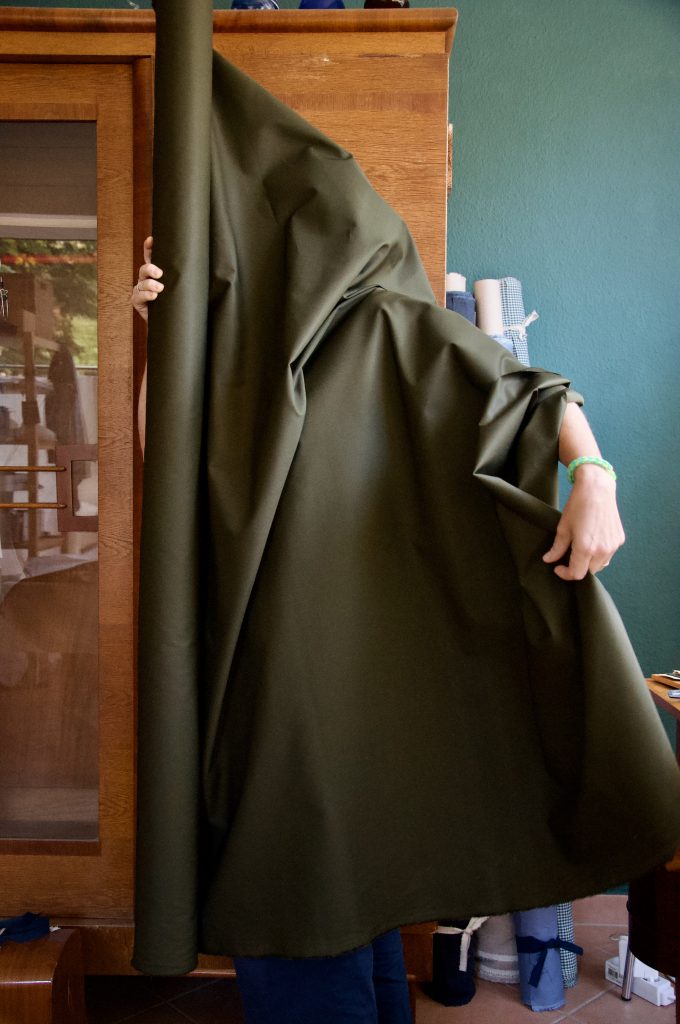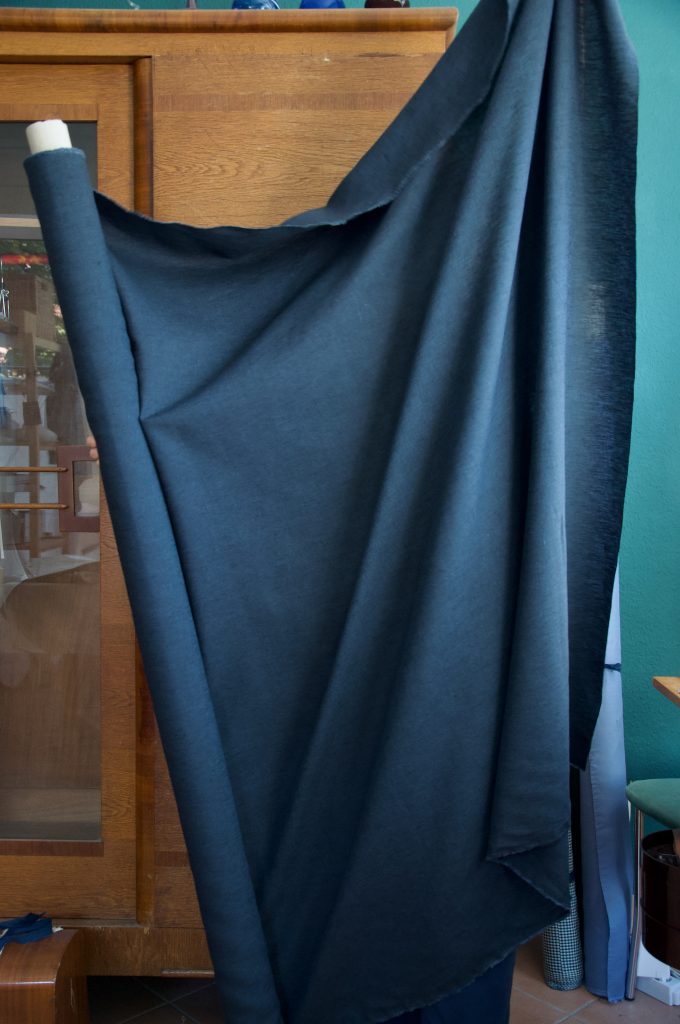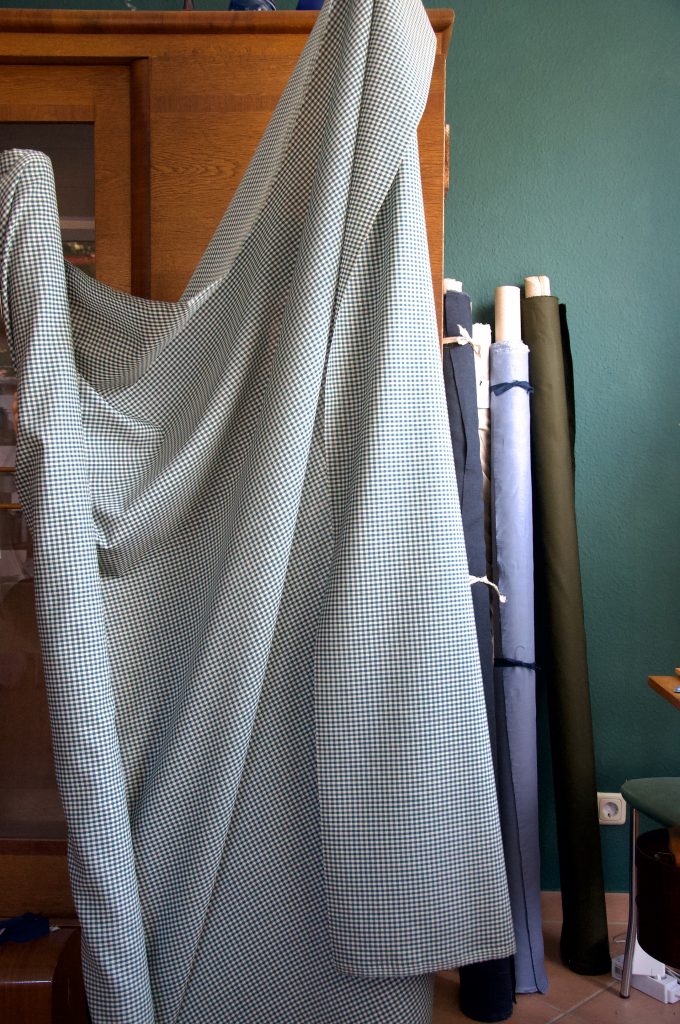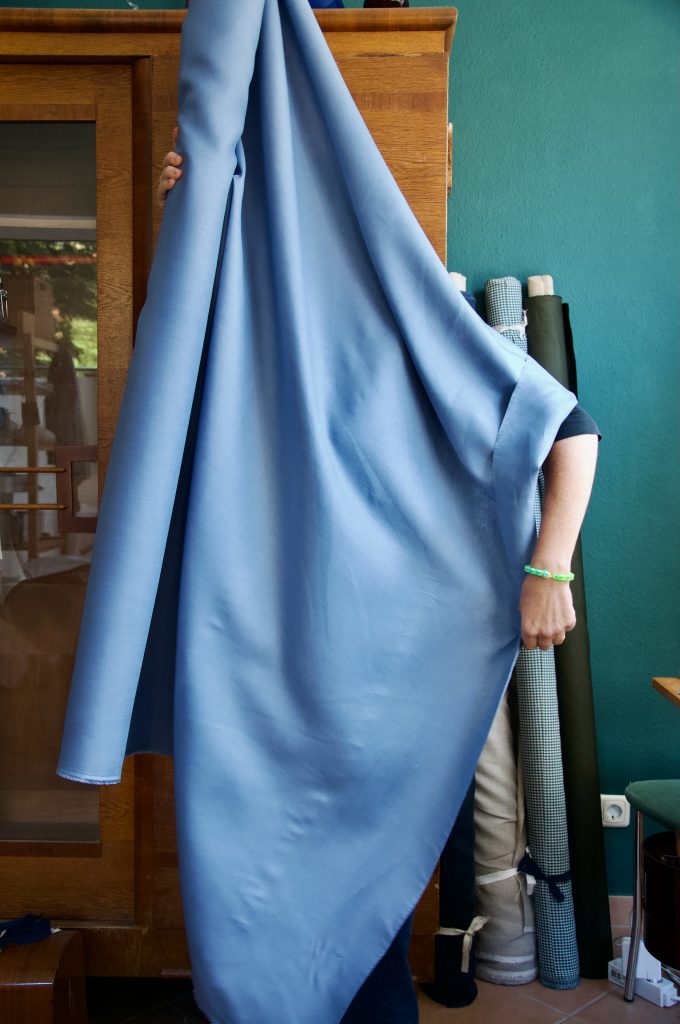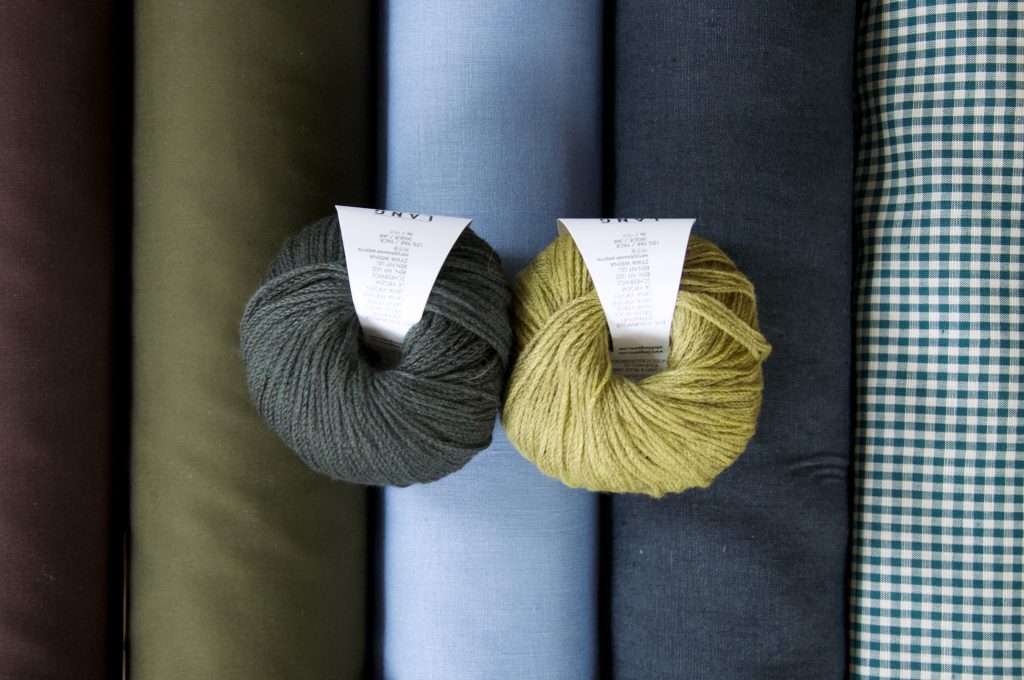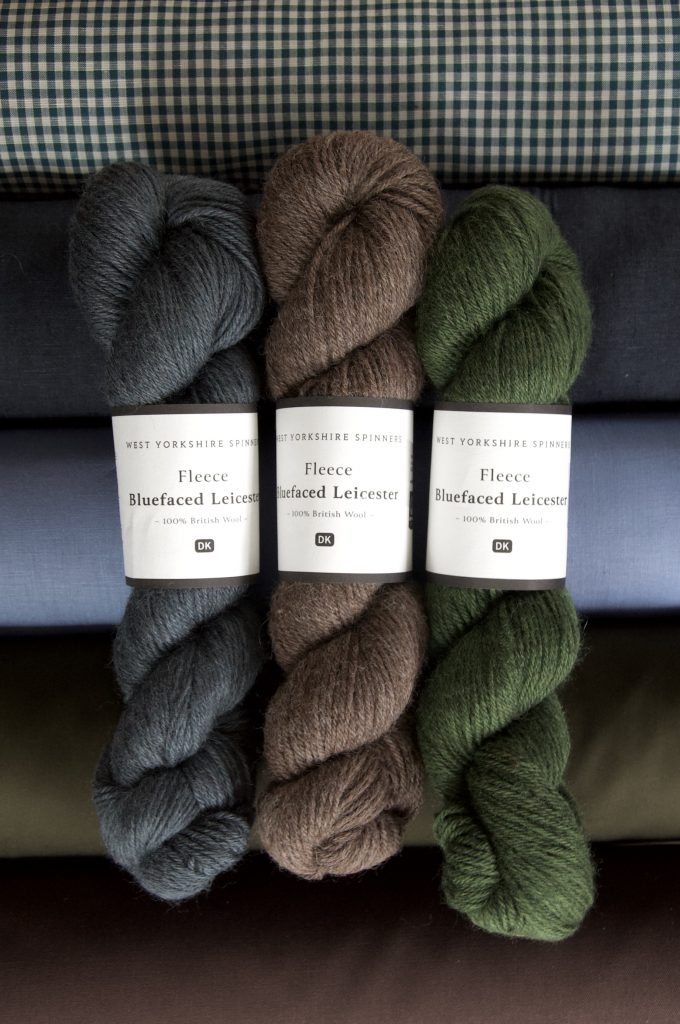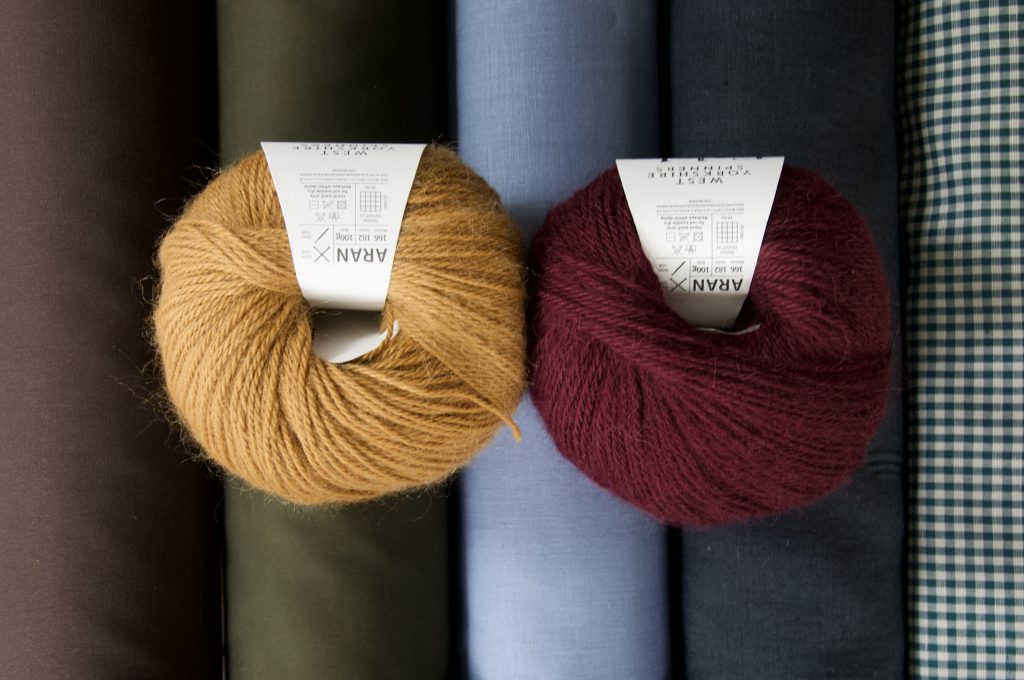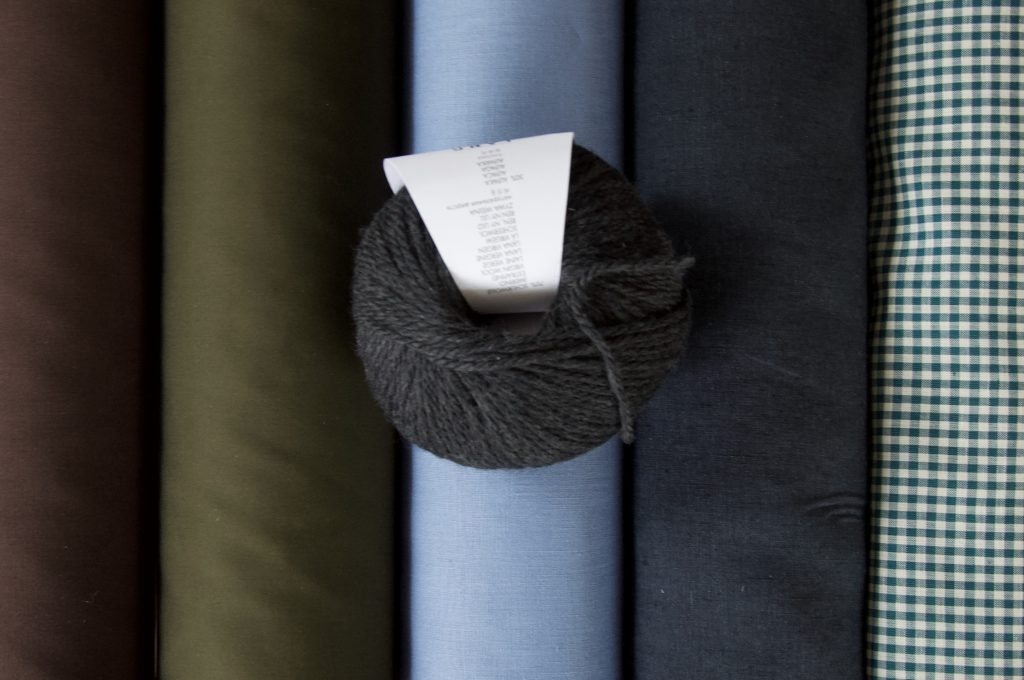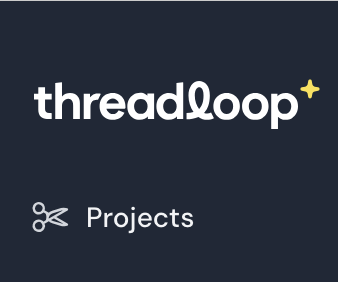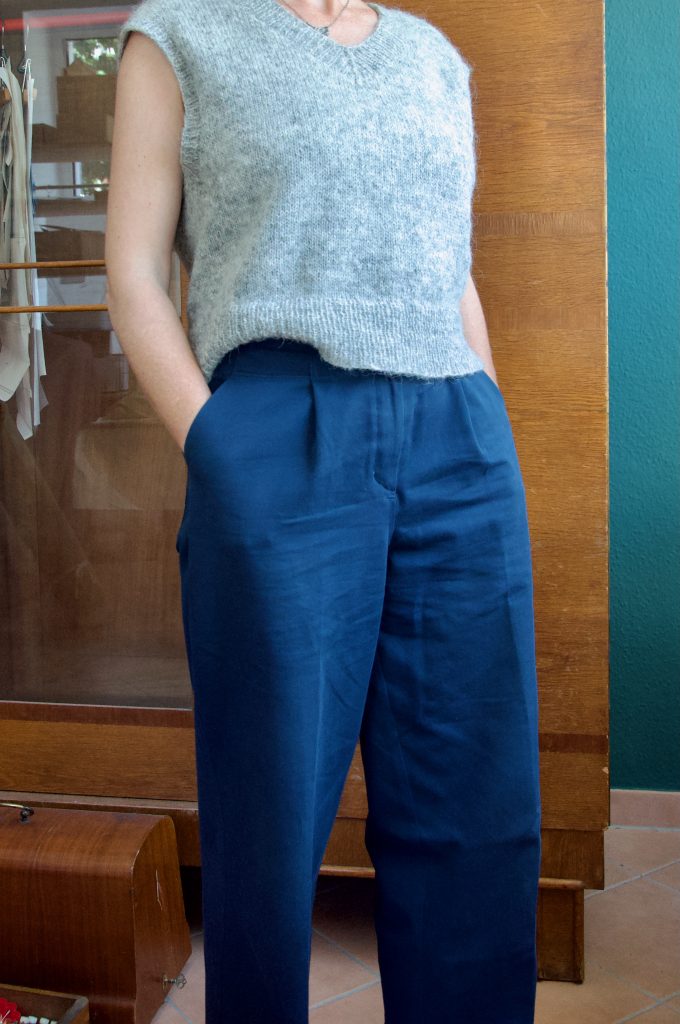Dein Warenkorb ist gerade leer!
Schlagwort: English
-
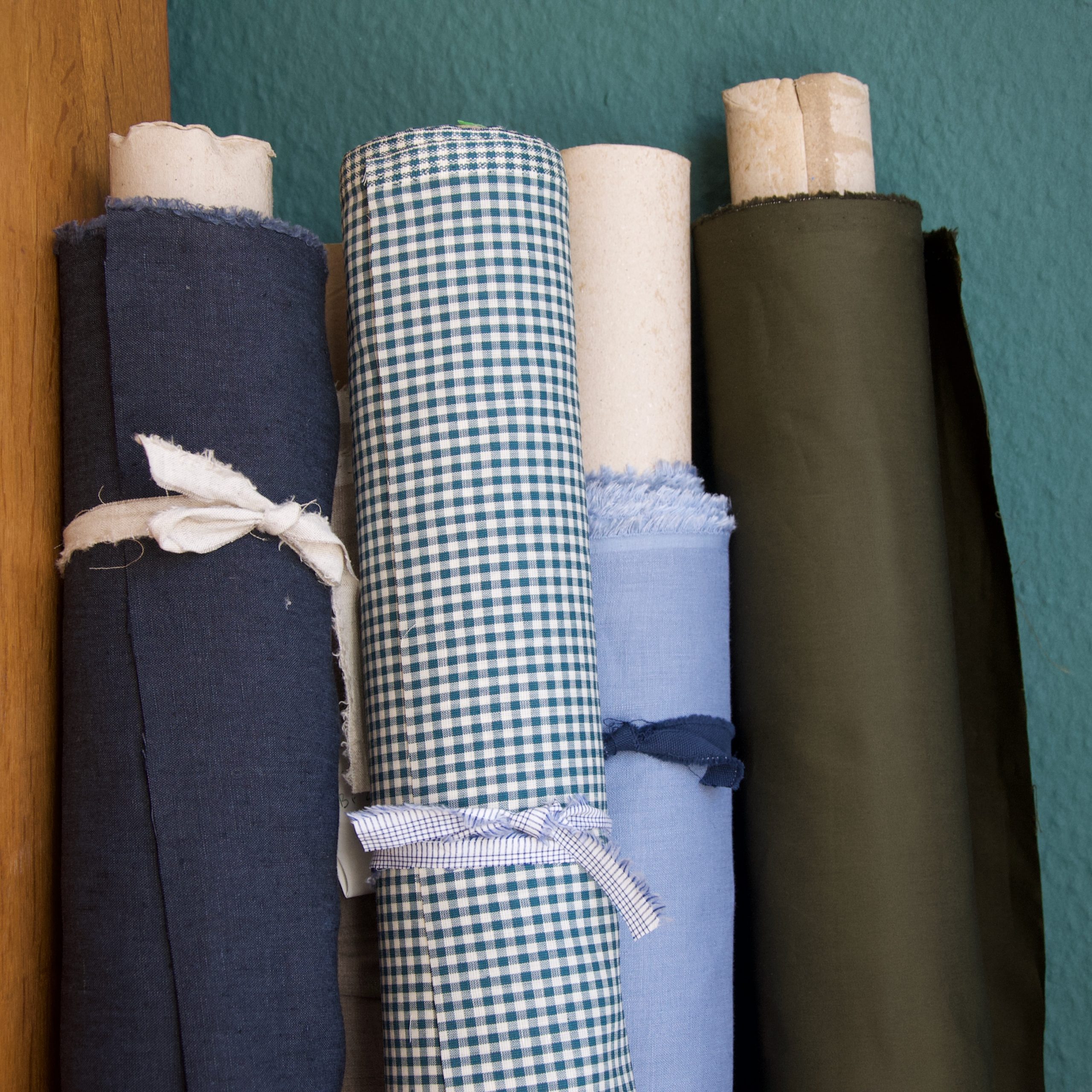
Inspiration – SELU & Fadenwohl Capsule Collection n.1
Do you need a little inspiration for fall sewing and knitting? Here are a few ideas.
Um diesen Beitrag auf Deutsch zu lesen, klicke hier.
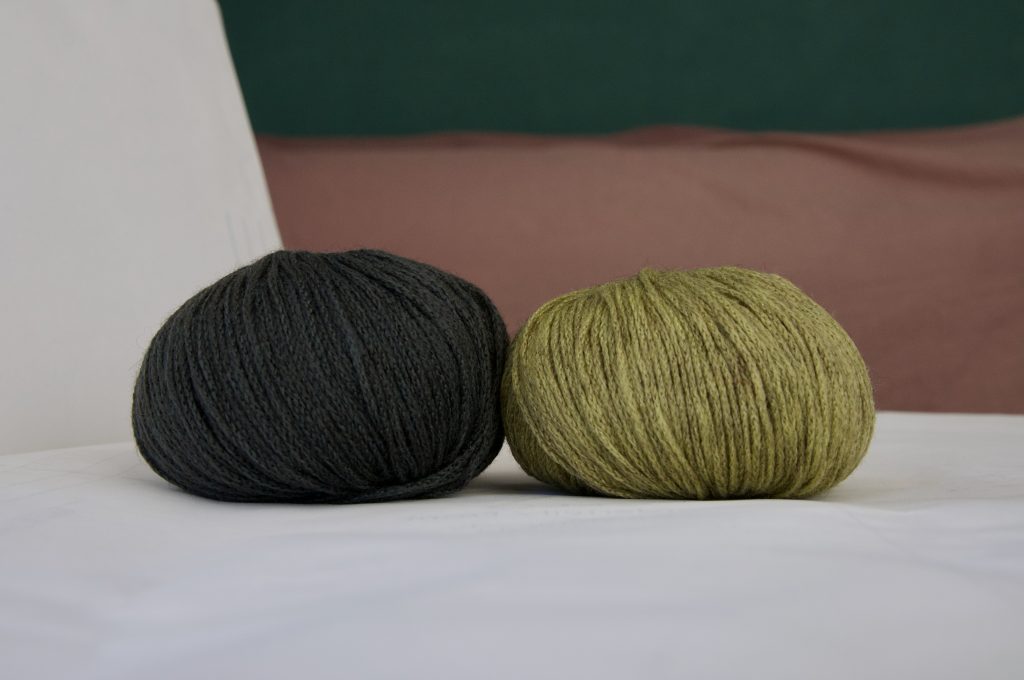
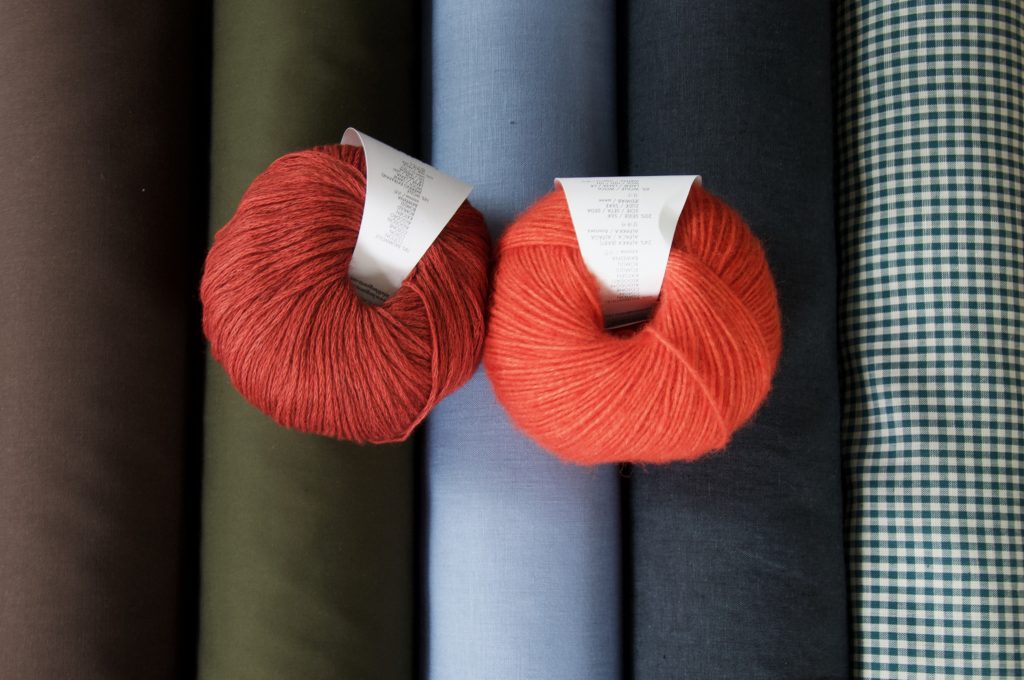
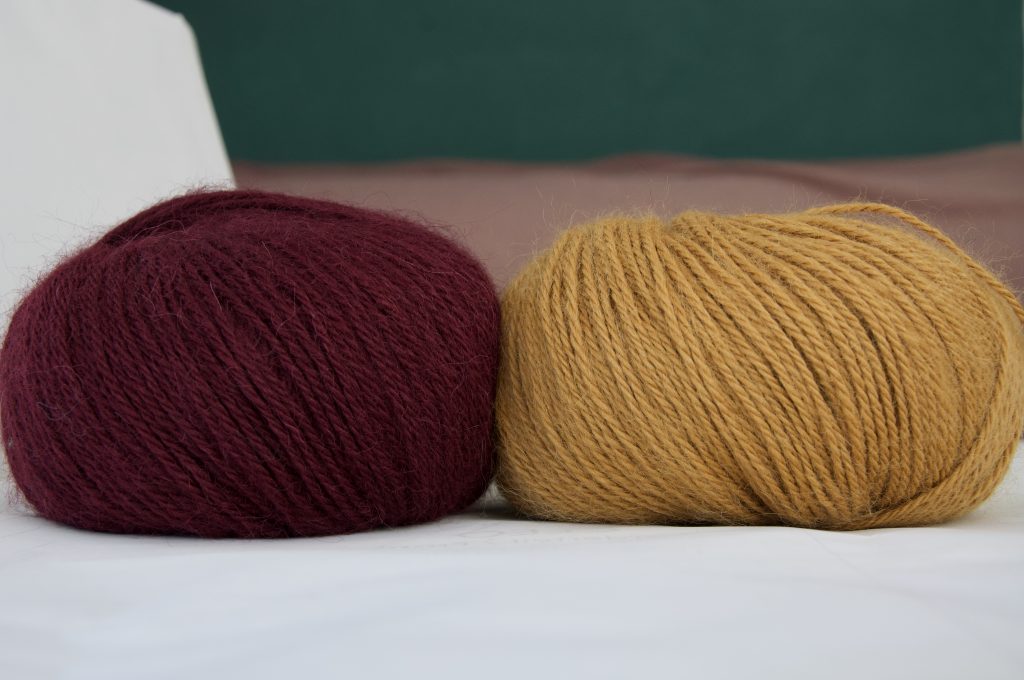
(Not an advertisement for any of the designers or patterns. All links for sewing patterns go to the pattern pages on Threadloop, my favorite social media platform for all things sewing. I have a paid account there, but the free tier is also quite good. The knitting pattern links will take you to the patterns on Ravelry – a great social media site for knitters. )
Fabrics: Sewing Pattern Inspiration
Except where noted, all pattern links will take you to the pattern listing on Threadloop (a social media site designed by and for sewists).
This fabric would be great for light jackets or anoraks.
beginner (and plus size) friendly Belmore Jacket pattern from Muna and Broad (English language). The Dark Blue Linen below would also make a lovely Belmore Jacket.
I am using this fabric to make the shorter version of the Darcy Coat by the Modern Sewing Company, using the Linen Wool Blend below as a lining.
At 270 g/m2 this linen is a nice weight for overshirts and light jackets. It would also make a beautiful dress or skirt.
Kirsti from TAUKO Magazine & Stefanie Kroth (in German and English – Threadloop links to the English version) is a zero waste skirt pattern with a very interesting series of pleats at the front. The linen would be lovely, although given the slightly looser structure of the weave the skirt may need to be work with a slip.
Potting Smock by Allotment Clothing (English language) is an intermediate level workwear inspired smock, featuring felled seams and a lovely collar. I have not yet sewn it, but it is on my short list. (The Dark Olive Green Twill above would also make a great version of this smock)
Optimatium Dress by TAUKO & Liz Haywood (Elizabeth M. Haywood) (English – unknown sewing level). Maybe I am showing my age, but this zero-waste dress or duster reminds me strongly of the linen jacket worn by Kiera Knightly as Elizabeth Bennet in the 2005 version of Pride and Prejudice. The pattern was originally published in TAUKO issue no. 9. (I have this issue currently in stock – this link goes to the listing on my website)
This fabric would be wonderful as fall overshirts, slightly more robust button-up shirts, or fall dresses. As an experiment, I’m using it as a lining in a jacket made from the Dark Olive Green Twill.
Swing from TAUKO Magazine & Kaisa Rissanen (English, confident-beginner sewing level) is a big swishy dress that would be great for fall layering.
Vernon Shirt by Cashmerette – (English only, Intermediate sewing level) Cashmerette is another pattern designer who focuses on creating clothing in inclusive size ranges, and along the way creates excellent tutorials about fitting a wide variety of body shapes.
At 210 g/m2 this linen would be lovely used in heavier collared shirts, and blouses
Revel Topper by Sew House Seven (English) – confident beginner, features a shawl collar with construction details that allow for embroidery, or using different fabrics to play with color blocking. This collar would also look great with a vest, or with a small scarf.
Alea Shirt & Dress by Sew Lala Patterns – intermediate (in German and English) a beautiful, classic, relaxed collared shirt or shirtdress.
Yarns: Knitting Pattern Inspiration
If you are local to Jena, or planning a trip to Jena soon, all yarns mentioned here may be purchased directly from Fadenwohl in person.
All pattern links below will take you to the pattern listing on Ravelry (a social media site designed by and for knitters).
Vaya has a structure that highlights stitches, making it particularly good for textured knits, like this Coral Reef Scarf pattern by Lisa Hannes , or this ribbed camisole – the CÉCILE Top pattern by Susanne Müller maybe for layering under something like the Alea Shirt & Dress?
Another idea for Vaya is lovely large shawl filled with interesting textures and techniques: KOLDING pattern by ChrisBerlin (Pattern available in English, German, and several other languages). It may be worked in a single color, but it also includes a section that the designer suggests could be knit in a second color. This scarf could also be knit with the Nomad yarn (below).
Regina develops a soft halo, making is particularly lovely in this classic beginner friendly scarf: Sophie Scarf pattern by PetiteKnit (Pattern available in English, German, and several other languages)
Both the Sophia Scarf and the Coral Reef scarf patterns can be easily adjusted to create scarves of different sizes, from neat small scarves that lend a little warmth and a pop of color on a fall day, to lovely long scarves to hide in on arctic days.
The classic beginner friendly Sophie Scarf pattern by PetiteKnit would also look fantastic knit with Nomad.
You could also knit soft fingerless mittens, like these Stamsund Mittens by Simone Bechtold (available in English and German) which feature an interesting broken rib pattern and a shaped thumb.
The KOLDING pattern by ChrisBerlin (available in English, German, and several other languages) creates a large shawl full of interesting textures and knitting techniques. The pattern can be worked in a single color, but the designer also suggests working a section in a second color. Perhaps the two shades of Nomad?
For those looking to knit all around classic light sweater for layering, the Niamh pattern by Isabell Kraemer (in English, German, and several others)features a v-neck, thoughtful construction, and a lot of movie night friendly stockinette. .
This yarn is basically perfect for everything. Soft enough for hats and cowls, it would also make great wrist or leg warmers. But I really think of this yarn, especially in these color-ways, as ideal for vests and sweaters. Maybe you have chosen to make a top with a structured collar out of the Light Blue Linen, the green BFL would shine as a vest.
Herbstieble Stulpen by Madame Nadelspiel (available in German) Basic, beginner friendly leg-warmers.
CARA Mütze by Susanne Müller (available in German and English) because everyone needs a good basic beanie.
The All Season Vest by Noriko Ichikawa (available in English, Japanese, and Korean) has become one of my favorite go to patterns for classic v-neck vests. The neckline feature subtle shaping at the neck and shoulder edge to create a better fit.
Ravelry: SeedySweater pattern by Clarissa Schellong: (in German, the English is coming soon) Featuring a really interesting v-neck and cool rib structure, this sweater is worked flat. If made slightly oversized it could be lovely worn over the Revel Topper, or Vernon Shirt, and also great worn under a jacket one of the jackets.
Ravelry: Oheka pattern by Orlane Sucche: (English) A slightly oversized v-neck sweater, worked flat.
Ravelry: Novice Slipover pattern by PetiteKnit: (available in English, German, and many other languages) A beginner friendly pattern that would look great paired over (or under) most of the suggested pieces.
Everyone needs a warm hat for winter. The Dual Loop Beanie pattern by Other Loops (available in English, German, and more) is a classic ribbed beanie.
For matching ribbed fingerless-mittens, perhaps the Dual Loop Beanie could be paired the Berno Mittens by Hanna kleen (available in English and German).
Another idea to bring extra warmth to a light fall jacket could be the Gujo collar pattern by aegyoknit, by Karoline Skovgaard Bentsen (available in English, German, and more).
And for those more experienced knitters looking for a giant warm sweater filled with interesting yoke textures, Ranunculus pattern by Midori Hirose (available in English, French, Japanese, and Spanish)
What are your pattern ideas for the fabrics and yarns in our capsule collection? Please share your own inspiration in the comments.
Wishing you happy knitting and sewing,
Sarah and Andrea
-
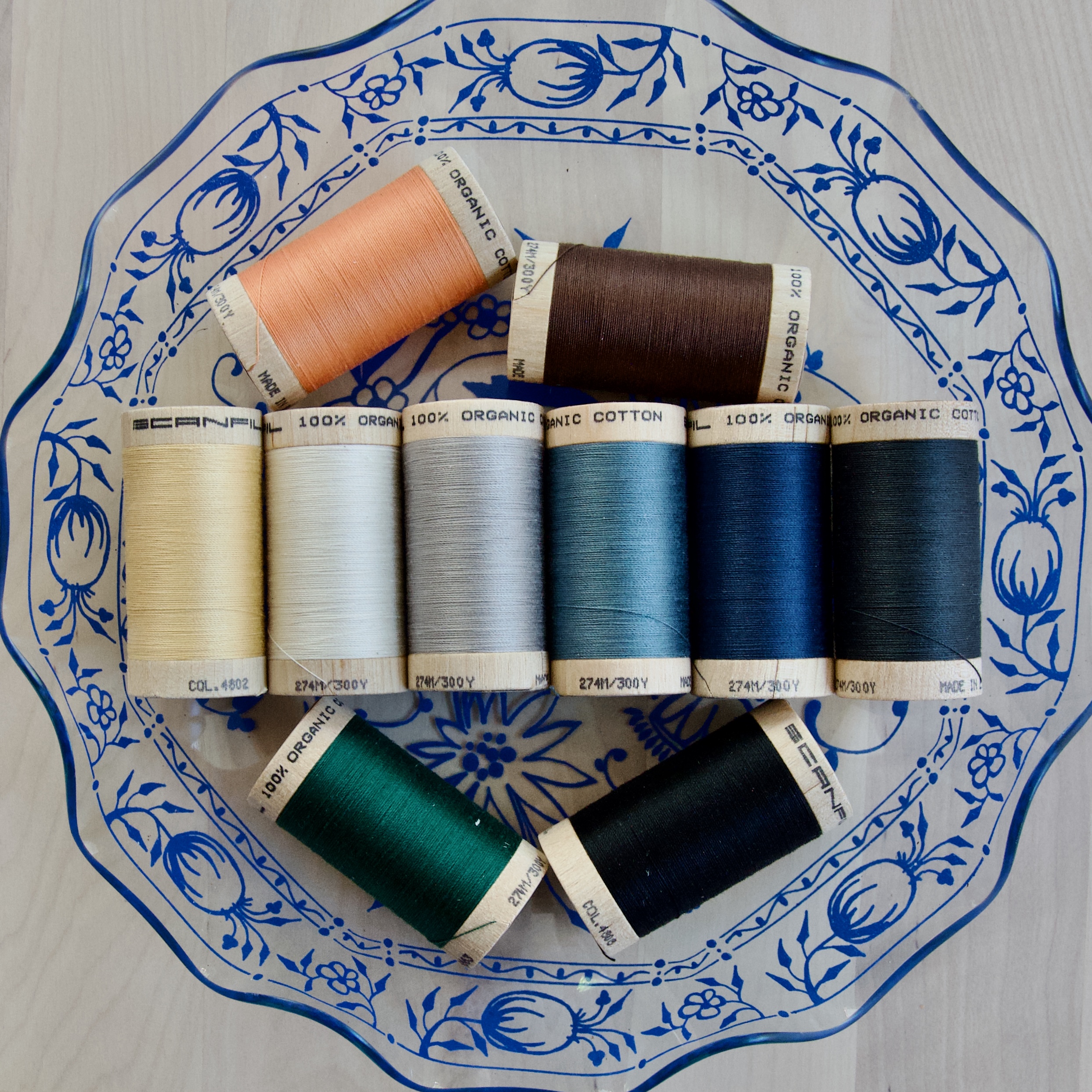
Measuring Thread Size or, what do those numbers mean?
If you are new to sewing, or new to thinking about thread and what it is made of, you may be confused by the different numbers used to denote thread size. You are not alone in your confusion. Several different standards for denoting thread “thickness” have developed over time, geography, and industry (many of which are still in use today) and to be even more confusing, when thread is exported/imported it is sometime relabelled/mis-labled to better fit the predominant scale in use in the importing country.
Different thread measuring systems use different units of measurement, but for our purposes the two major systems can basically be summarized as “how long is a thread that weighs x amount” or from the opposite direction, “if you have x amount of thread, how much will it weigh”? These two systems yield completely opposite numbering systems, and cause much confusion.
Cotton thread is generally labelled with a weight system (denoted “wt” on the label). In this system one starts with a standard weight of thread and measures how long it is – so for example, 1 gram of cotton can be spun into a thread that is 30 meters long or it can be spun into a thread that is 50 meters long. They will both contain the same weight of cotton, and so the 30 meter long thread will be thicker than the 50 meter thread. In this way of measuring threads, bigger numbers = thinner thread.
Sometimes the thread label stops there – with a “#50” or a “50wt” but sometimes the system contains more information. To understand the next part of the explanation it is helpful to know that cotton thread, like knitting yarn, is made up of thinner strands of fibre that have been twisted into “plies” which are then twisted together to form the thread. In the system used to describe cotton threads the second number shows the number of plies (for example “50/2wt” means the finished thread is made of two plies).
Some systems work in the other direction, and instead of asking “how long is a thread that weighs 1 gram” will ask “ how much does a given length of thread weigh”. In these systems the bigger number = thicker thread. These systems are often used for threads made of synthetic materials.
It is nice to know roughly what these systems of measurement mean, especially when ordering online, but the exact meaning is mostly useful for large-scale clothing manufacturers. For people sewing at home it is important to understand what the measurements mean relative to each other. The general advice is to choose thinner thread for lighter weight fabrics and thicker threads for heavier fabrics, both to avoid weighing the fabric down, and to hopefully prevent damage to the fabric if too much force is applied to the seam (better the thread rip than the fabric rip).
Scanfil Fine Thread advertises the 30/2 wt Organic Cotton thread as the equivalent of a “universal weight thread”. I’m a little unsure what exactly they mean by this, but generally I use the 30/2wt for mid-weight fabrics, and the 50/2 for lighter weight fabrics (although I have also successfully used the 50/2wt to sew loose fitting pants out of mid-weight twill). You will also want to think about your needle size. According to Schmetz Needles, the general rule is that the “eye of the needle should be 40% larger than the diameter of the thread”. But because of the various properties of polyester vs. cotton, you may want to try a slightly larger needle size when working with cotton thread, especially if you have problems with missed stitches.
I also use 50/2 wt thread to zig-zag stitch my fabric edges, either at the beginning of sewing if I have fabric that wants to unravel, or to neaten up and finish my edges. I do not have an Overlock machine, but I have several customers who are experimenting with using the 50/2wt with their Overlock machines. Scanfil Fine Threads packages their thread in larger amounts, offering 5000 yards of 50/2 wt or 3000 yard of 30/2 weight on a wooden cones. I do not have any in stock, but I am happy to order them on request.
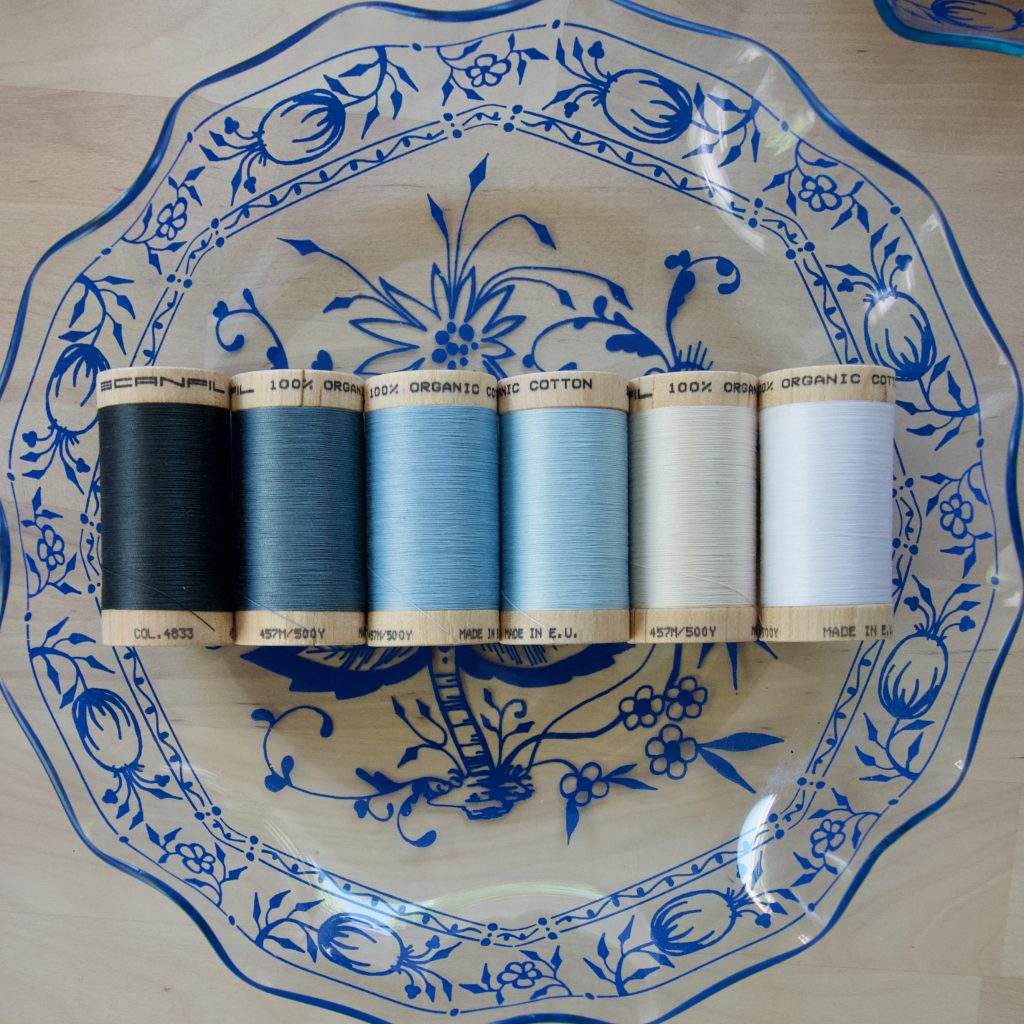
Scanfil Bio-Baumwollgarn 50/2 wt

